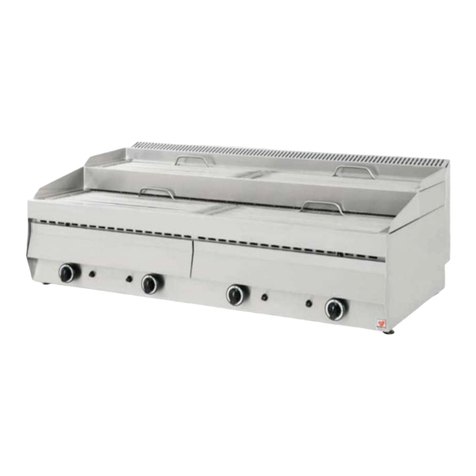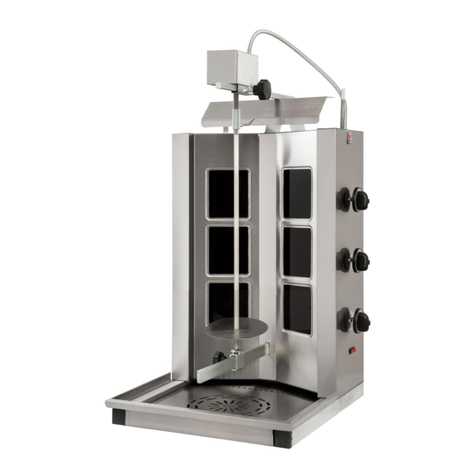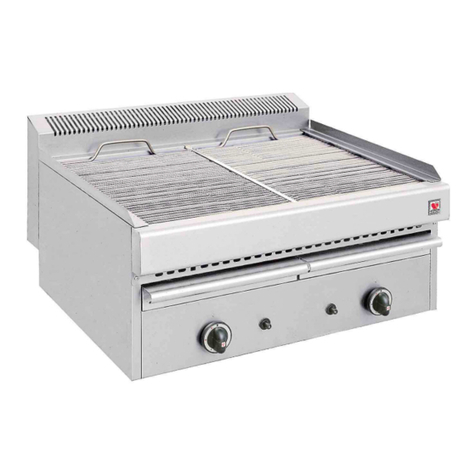
1.1 STANDARDS AND REQUIREMENTS.........................................................
We would like to remind you that the appliances installed in places open to
the public should meet specific requirements.
Among them there are:
• Specific standards for the type of local public.
• Safety standards against the risk of fire and panic in a public place.
• General standards of installation of cooking appliances in refreshment
facilities.
• General standards concerning installations using combustible gas and
liquid hydrocarbons.
1.2 PA KING.....................................................................................................
Make sure packing is intact before remove the appliance. Open cardboard
carefully to ensure no metal stapling, adhesive tape or other packing
components litter the environment, as these can prove hazardous.
1.3 OBSTA LES AND POSITION....................................................................
• Make sure there is enough space available to place the appliance and that
the surface it stands on is stable and level.
• Remove the protective film from the external walls of the appliance making
sure no glue or plastic is stuck on the surface. If there are residues of glue,
remove them using the right solvent.
• Make sure the appliance is level on the surface available. If necessary,
regulate its height accordingly, by adjusting the legs of the appliance.
1.4 ONNE TION..............................................................................................
Before connecting the appliance to the network make sure that:
• The present gas on the place corresponds to that for which the apparatus
is predisposed: In If it is not does not proceed with the connection.
Regulate the appliance for the gas available following instructions under
2.2.
• The burners are manufactured with a way to stand thermal and mechanical
stress and are equipped with fixed nozzles. This is why it is necessary to
change the nozzles every time you change the type of gas.
• Data concerning the regulation of the appliance are to be found on the label
on the backside of the appliance.
• Connect the machine to the network using metal pipes, either rigid or
flexible.






























